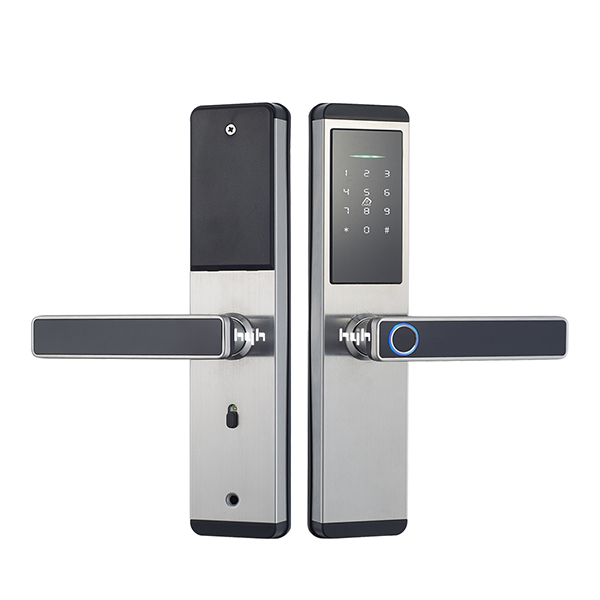Precision Perfected: Ensuring Accuracy and Reliability in Biometric Fingerprint Recognition Systems
2023-11-16
Introduction:
In the dynamic landscape of security technology, Biometric Fingerprint Recognition Systems of smart door lock have emerged as frontline guardians, providing unparalleled accuracy and reliability. The ability to authenticate individuals based on their unique fingerprints is a testament to the precision of modern security systems. In this blog, we delve into the intricacies of how the accuracy and reliability of biometric fingerprint recognition systems are meticulously ensured.
Biometric Fingerprint Recognition: The Foundation of Security Precision
1. High-Resolution Optical Scanning:
The accuracy of a biometric fingerprint recognition system begins with the quality of the fingerprint image captured. High-resolution optical scanners are employed to capture a detailed image of the unique ridges and valleys on an individual's fingertip. This meticulous scanning process forms the foundation for accurate biometric identification.
2. Capacitive Sensors:
The use of capacitive sensors is crucial in capturing the electrical conductivity of the skin's ridges and valleys. This technology ensures that the system not only creates a visual image but also registers the subtle electrical differences in the user's fingerprint, enhancing the system's accuracy and reliability.
3. Advanced Image Processing Algorithms:
Once the fingerprint is captured, sophisticated image processing algorithms come into play. These algorithms analyze the minutiae points—specific details where ridges end, bifurcate, or converge. By creating a digital template that represents these unique features, the system ensures a robust foundation for accurate fingerprint matching.
4. Template Creation and Encryption:
The digital template created from the fingerprint is securely stored within the system. To protect user privacy, these templates are often encrypted, rendering them unreadable even if accessed. This encryption adds an extra layer of security, ensuring that the stored fingerprint data cannot be compromised.
5. Live Finger Detection:
To counteract potential spoofing attempts using artificial fingerprints or images, many systems incorporate live finger detection. This feature utilizes various techniques, such as analyzing blood flow or detecting the electrical conductivity of live skin, to ensure that the presented fingerprint is from a live, authentic finger.
Ensuring Reliability: Continuous Improvement and Monitoring
1. Adaptive Learning Mechanisms:
Biometric fingerprint recognition systems often employ adaptive learning mechanisms. These systems can adapt to changes in the user's fingerprint over time, accounting for factors such as aging, skin conditions, or injuries. This adaptability ensures consistent and reliable recognition even as the user's fingerprint may undergo subtle changes.
2. Regular Maintenance and Calibration:
To maintain peak performance, biometric systems undergo regular maintenance and calibration. This includes checking and adjusting the sensitivity of sensors, updating software, and ensuring that all components are in optimal condition. Regular maintenance routines contribute to the long-term reliability of the system.
3. Error Correction Algorithms:
Error correction algorithms play a crucial role in enhancing reliability. These algorithms are designed to identify and correct errors that may occur during the fingerprint recognition process. By minimizing false positives and false negatives, the system ensures that only authorized individuals are granted access.
4. Biometric Matching Confidence Levels:
Biometric systems often provide matching confidence levels, indicating the system's certainty in a match. Higher confidence levels contribute to the overall reliability of the system, with lower chances of false positives or false negatives. Users and administrators can adjust these confidence levels based on security requirements.
Conclusion: A Symphony of Precision and Assurance
In the realm of security technology, the accuracy and reliability of biometric fingerprint recognition systems form a symphony of precision and assurance. From high-resolution optical scanning to advanced image processing algorithms and adaptive learning mechanisms, these systems are engineered to provide unparalleled accuracy in identifying individuals. Continuous improvement, regular maintenance, and robust error correction mechanisms ensure that the reliability of biometric fingerprint recognition systems of smart door lock remains unwavering, setting the standard for modern security solutions. As technology continues to advance, the future holds exciting possibilities for further refining the accuracy and reliability of biometric security systems.



